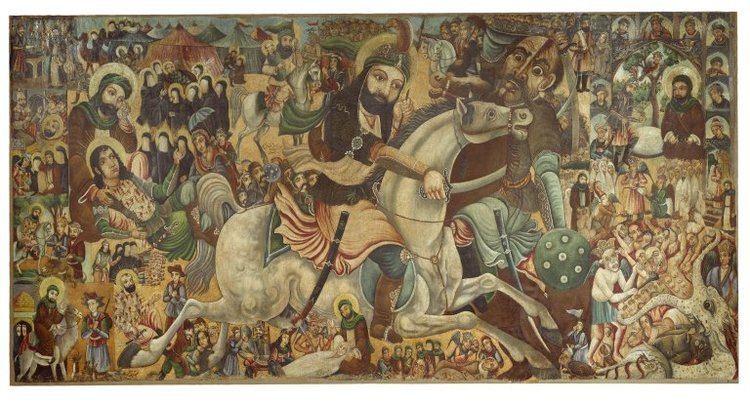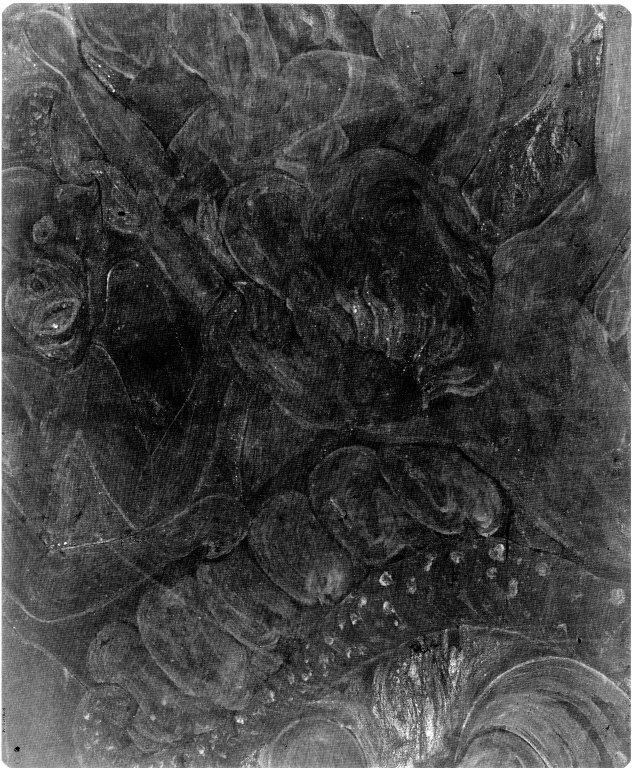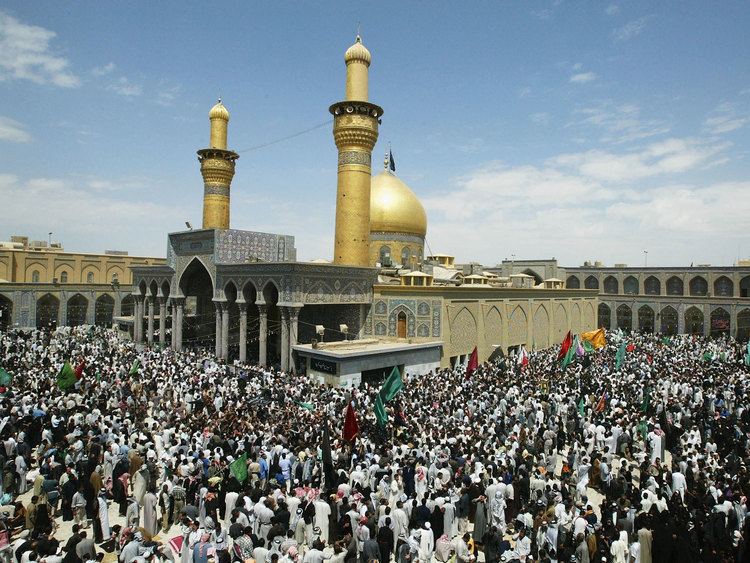Country | Governor Karbala | |
 | ||
Colleges and Universities University of Karbala, Ahlulbait University College | ||
Map of Karbala
Karbala (Arabic: كَرْبَلَاء, Karbalā’, Persian: کربلاء) is a city in central Iraq, located about 100 km (62 mi) southwest of Baghdad, and a few miles east of Lake Milh. Karbala is the capital of Karbala Governorate, and has an estimated population of 0.7 million people (2015).
Contents
- Map of Karbala
- Imam hussain hazrat abbass shrine karbala
- Iraq karbala celebrates ashoura
- Etymology
- Climate
- Battle of Karbala
- Early modern
- Main sights
- Mesopotamia in the Quran
- Ahadith
- Sports
- Media
- University
- Indian subcontinent
- References

The city, best known as the location of the Ghazwaṫ Karbalā’ (Arabic: غَـزوَة كَـربَـلَاء, Battle of Karbala) in 680 CE, or the Masjidayn (Arabic: مَـسـجِـدَيـن, two Mosques) of Imam Husayn and Abbas, is considered as a holy city for Shi'ite Muslims as Mecca, Medina and Jerusalem. Tens of millions of Shi'ite Muslims visit the site twice a year, rivaling Mecca as a place of pilgrimage. The martyrdom of Imam Husayn ibn Ali is commemorated annually by millions of Shi'ites, Up to 8 million pilgrims visit the city to observe ‘Āshūrā’ (Arabic: عَـاشُـورَاء, "Tenth Day" {of the month of Muharram}), which marks the anniversary of Imam Husayn's death, but the main event is the Arba‘īn (Arabic: أَربَـعِـيـن, 40th day after Ashura), where up to 22 million visit the holy graves. Most of the pilgrims travel barefooted from all around Iraq and more than 56 countries.

Imam hussain & hazrat abbass shrine karbala ???? ???? ???? ????
Iraq karbala celebrates ashoura
Etymology
Several theories address the origin of the name Karbalā’. The geographer Yaqut al-Hamawi expressed the traditional hypothesis: that the name is an alternate Arabic feminine version of karbalah ("soft earth"). Alternatively, it has been said to be derived from the Aramaic word Kora, meaning place for making bricks, for the nearby ancient city of Bābil (Arabic: بَـابِـل, Babylon), hence Karbābil (Arabic: كَـرْبَـابِـل), which became Karbalā’ by contraction. According to Shi'ite belief, the archangel Gabriel narrated the true meaning of the name Karbalā’ to Muhammad: a combination of karb (Arabic: كَـرب, the land which will cause many agonies) and balā’ (Arabic: بَـلاء, afflictions)."
The word could also be derived from the Aramaic word כַרְבָלָא / ܟܪܒܠܐ [ krblh | karbālā ], ultimately derived from Akkadian karballatu. It also means a type of head covering and cock's comb.r
Climate
Karbala experiences a Semi-arid climate with extremely hot, dry summers and cool winters. Almost all of the yearly precipitation is received between November and April, though no month is truly wet.
Battle of Karbala
Karbala's prominence in Shia traditions is the result of the Battle of Karbala, fought on the site of the modern city on October 10, 680 AD (10 Muharram 61 AH). Both Imam Hussein ibn Ali and his brother Abbas ibn Ali were buried by the local Banī Asad tribe, at what later became known as the Mashhad Al-Hussein. The battle itself occurred as a result of Husain's refusal of Yazid I's demand for allegiance to his caliphate. The Kufan governor, Ubaydallah ibn Ziyad, sent thousands of horsemen against Imam Hussein as he traveled to Kufa. The horsemen, under 'Umar ibn Sa'd, were ordered to deny Imam Hussein and his followers water in order to force Imam Hussein to agree to give an oath of allegiance. On the 9th of Muharram, Imam Hussein refused, and asked to be given the night to pray. On 10 Muharram, Imam Hussein ibn Ali prayed the morning prayer and led his troops into battle along with his brother Al-Abbas. Many of Hussein's followers, including all of his present sons Ali al-Akbar, Ali al-Asghar (a few months old) and his nephews Qassim, Aun and Muhammad were killed.
In 63 AH (682 AD), Yazid ibn Mu'awiya released the surviving members of Imam Hussein's family from prison. On their way to the Mecca, they stopped at the site of the battle. There is record of Sulayman ibn Surad going on pilgrimage to the site as early as 65 AH (685 CE). The city began as a tomb and shrine to Hussein and grew as a city in order to meet the needs of pilgrims. The city and tombs were greatly expanded by successive Muslim rulers, but suffered repeated destruction from attacking armies. The original shrine was destroyed by the Abbasid Caliph Al-Mutawakkil in 850 but was rebuilt in its present form around 979, only to be partly destroyed by fire in 1086 and rebuilt yet again.
Early modern
Like Najaf, the city suffered from severe water shortages that were only resolved in the early 18th century by building a dam at the head of the Husseiniyya Canal. In 1737, the city replaced Isfahan in Iran as the main centre of Shia scholarship. In the mid-eighteenth century it was dominated by the dean of scholarship, Yusuf Al Bahrani, a key proponent of the Akhbari tradition of Shia thought, until his death in 1772, after which the more state-centric Usuli school became more influential.
The Wahhabi sack of Karbala occurred in 21 April 1802 (1216 Hijri) (1801), under the rule of Abdul-Aziz bin Muhammad the second ruler of the First Saudi State, when 12,000 Wahhabis from Najd attacked the city of Karbala. The attack was coincident with the anniversary of Ghadir Khum event, or 10 Muharram. Wahhabis killed 2000-5000 of the inhabitants and plundered the tomb of Husayn ibn Ali, grandson of Muhammad and son of Ali bin Abi Talib, and destroyed its dome. Then they seized a large amount of spoils including golds, Persian carpets, money, pearl and guns accumulated in the tomb most of them donations. The attack lasted for 8 hours and Wahhabis left the city with more than 4,000 camels carrying their plunder.
After the First Saudi State invasion, the city enjoyed semi-autonomy during Ottoman rule, governed by a group of gangs and mafia variously allied with members of the 'ulama. In order to reassert their authority, the Ottoman army laid siege to the city. On January 13, 1843 Ottoman troops entered the city. Many of the city leaders fled leaving defense of the city largely to tradespeople. About 3,000 Arabs were killed in the city, and another 2,000 outside the walls (this represented about 15% of the city's normal population). The Turks lost 400 men. This prompted many students and scholars to move to Najaf, which became the main Shia religious centre. Between 1850 and 1903, Karbala enjoyed a generous influx of money through the Awadh Bequest. The Shia ruled Indian Province of Awadh, known by the British as Oudh, had always sent money and pilgrims to the holy city. The Oudh money, 10 million rupees, originated in 1825 from the Awadh Nawab Ghazi-ud-Din Haider. One third was to go to his wives, and the other two thirds went to holy cities of Karbala and Najaf. When his wives died in 1850, the money piled up with interest in the hands of the British East India Company. The EIC sent the money to Karbala and Najaf per the wives' wishes, in the hopes of influencing the Ulama in Britain's favor. This effort to curry favor is generally considered to have been a failure.
Karbala's development was strongly influenced by the Persians, who were the dominant community for many years (making up 75%of the city's population by the early 20th century). The Kammouna family were custodians of the shrines for many years and effectively ran the city until it fell under the control of the British Empire in 1915. While the Kammouna family surrendered rule over to the British and sought to work for and with the British, many notable Karbala clans continues to oppose the foreign invasion. One such clan is the historically well-known Karbala clan of Awad who has been inhabitants of the city for some 500 years. They, alongside others, fought directly against the British. According to the writings of Gertrude Bell, some of the Awad clan's sheiks were banished after the control of the city for many years before returning to re-establish their land and community prestige. The Awad Clan has historically been noted as one of the only clans in Karbala to actively oppose the British control and remain an influential family in the city to this day.
The association of the city with Shia religious traditions led to it being treated with suspicion by Iraq's Sunni rulers. Under Saddam Hussein's rule, Shia religious observances in the city were greatly restricted and many non-Iraqi Shia were not permitted to travel there at all.
In March 1991, the city was badly damaged and many killed when a rebellion by local Shia was put down with great brutality by Saddam's regime. The shrines and surrounding Shia houses, cemeteries, and hospitals became riddled with machine gun fire and military shelling. By April 1991, Saddam Hussein began an intense demolition project around the shrines in order to create a concrete perimeter. This "sanitary zone" created a wide open space in between and around the shrines. The shrines were rebuilt by 1994. After the United States Military Forces invaded Iraq in 2003, the administration allowed for foreign Shia pilgrims to an unrestricted Ashura pilgrimage in decades. Tens of thousands of Shia Muslims from other countries rushed to US embassies to get visit visas to attend Ashura in Karbala. The 2004 pilgrimage was the largest for decades, with over a million people attending from all over the world but mainly Iraqis. It was marred by bomb attacks on March 2, 2004, now known as the Ashoura massacre, which killed and wounded hundreds despite tight security in the city.
A big Shia festival passed off peacefully amid fears of possible violence that brought thousands of troops and police into the city. Hundreds of thousands of Shia pilgrims who had come together to celebrate the Shaabaniya ritual began leaving the southern city after September 9, 2006 climax ended days of chanting, praying and feasting. Heavy presence by police and Iraqi troops seemed to have kept out suicide bombers who have disrupted previous rituals.
On April 14, 2007, a car bomb exploded about 600 ft (180 m) from the shrine, killing 47 and wounding over 150.
On January 19, 2008, 2 million Iraqi Shia pilgrims marched through Karbala city, Iraq to commemorate Ashura. 20,000 Iraqi troops and police guarded the event amid tensions due to clashes between Iraqi troops and Shia Muslims which left 263 people dead (in Basra and Nasiriya).
Main sights
Mesopotamia in the Quran
Some Shi'ites consider this verse of the Quran to refer to Iraq, land of the Shi'ite sacred sites of Kufah, Najaf, Karbala, Kadhimiyyah (which used to be a town of its own, but is now a part of the city of Baghdad), and Samarra, since the Monotheistic preachers Ibrāhīm (Arabic: إِبـرَاهِـيـم, Abraham) and Lūṭ (Arabic: لُـوط, Lot), who are regarded as Prophets in Islam, are believed to have lived in the ancient Iraqi city of Ur, before going to Al-Arḍ Al-Mubārakah (Arabic: الأَرض الـمُـبَـارَكَـة, "The Land The Blessed").
But we delivered him (Ibrahim) and Lut (from their Polytheistic opponents), and directed them to the land which we have blessed for the Worlds.
Aside from the story of Abraham and Lot in Polytheistic Mesopotamia, there are passages in the Quran about Al-Jūdiyy Al-Munzal Al-Mubārak (Arabic: الـجُـودِيّ الـمُـنـزَل الـمُـبَـارَك, The Judi the 'blessed' landing-place), Babil and Qaryaṫ Yūnus (Arabic: قَـريَـة يُـونُـس, "Town of Jonah").
Ahadith
There are many Shi'ite traditions which narrate the status of Karbala:
"Karbala, where your grandson and his family will be killed, is the most blessed and sacred land on Earth, and it is one of the valleys of Paradise."
"God chose the land of Karbala as a safe and blessed sanctuary, twenty-four thousand years before He created the land of the Ka'bah and chose it as a sanctuary. Verily it [Karbala] will shine among the gardens of Paradise, like a shining star shines among the stars for the people of Earth."
"Not one night passes in which Gabriel and Michael do not go to visit him [Husayn]."
Also there are many Sunni traditions which narrate the status of Husayn:
Thus the tomb of the martyred Imam has acquired this great significance in Shi'ite tradition because the Imam and his fellow martyrs are seen as models of jihad in the way of God. Shi'ites believe that Karbala is one of the holiest places on Earth according to the following traditions (among others):
Karbala, where your grandson and his family will be martyred, is one of the most blessed and the most sacred lands on Earth, and it is one of the valleys of Paradise.
God chose the land of Karbalā’ as a safe and blessed sanctuary twenty-four thousand years before He created the land of the Ka'bah and chose it as a sanctuary. Verily it (Karbala) will shine among the gardens of Paradise like a shining star shines among the stars for the people of Earth.
Sports
Karbalaa FC is a football club based in Karbala.
Media
There are many references in books in films to "Karbala", generally referring to Hussein's death at the Battle of Karbala. Hussein is often depicted on a white horse impaled by arrows. There are films and documentaries about the events of Karbala in both animated and realistic form (see external links "Karbala: When the Skies Wept Blood"; "Safar-e-Karbala").
Video footage of the actual city exists in a British documentary entitled "Saddam's Killing Fields." The documentary shows the March 1991 destruction of the city by Saddam's army through the video camera of two brothers who lived in the city.
University
Hawza are the Islamic education institutions that are run collectively by mujtahid or Allamas to teach Shia Muslims and guide them through the rigorous journey of becoming and Alim. In terms of the hawaz in Karbala, After the death of a renowned Alama, the Sayyid Muhammad, the leadership in terms of teacher shifted to taqlid to mujtahid. This was a significant factor that lead to the leadership of Ulama to reside in Karbala and as well as Najaf. Initially Karbala's hawza (Islamic education institution) consisted mostly of Iranians and Turkish Ulama. After the death of Sharif-ul-Ulama Mazandarani in 1830 and the repression of the shia population by the Ottomans in 1843 both played an important role in the relocation of many Ulamas and thus Najaf becoming the center of Shia Islamic leadership in education.
As of now, there are two universities in Karbala. University of Karbala, which was inaugurated on March 1, 2002, is one of the top most universities in Iraq regarding academic administration, human resources, and scientific research. The Ahlulbait International University was founded in September 2003 by Dr. Mohsen Saleh Mohammed Baqir al-Qazwini. The university has three major focuses: Faculty of Law, Arts, and Islamic Law. Other majors of education such as medicine, agriculture, informatics etc. are still in the developing stages.
Indian subcontinent
In the Indian subcontinent Karbala apart from meaning the city of Karbala (which is usually referred to as Karbala-e-Mualla meaning Karbala the exalted), also means local grounds where commemorative processions end and/or ta'zīya are buried during Ashura or Arba'een, usually such grounds will have shabeeh (copy) of Rauza or some other structures.
In South Asia where ta'zīya refer to specifically to the miniature mausoleums used in processions held in Muharram. It all started from the fact that the great distance of India from Karbala prevented Indian Shi'is being buried near the tomb of Imam Husayn or making frequent pilgrimages(ziyarat) to the tomb. This is the reason why Indian Shi'is established local karbalas on the subcontinent by bringing soil from Karbala and sprinkling it on lots designated as future cemeteries. Once the karbalas were established on the subcontinent, the next step was to bring Husayn's tomb-shrine to India. This was established by building replicas of Husayn's mausoleum called ta'zīya to be carried in Muharram processions. Thousands of ta'zīyas in various shapes and sizes are fashioned every year for the months of mourning of Muharram and Safar; and are carried in processions and may be buried at the end of Ashura or Arbain.
